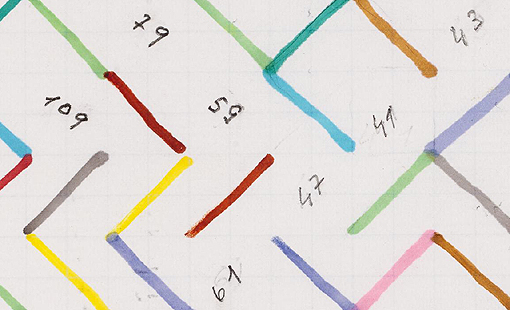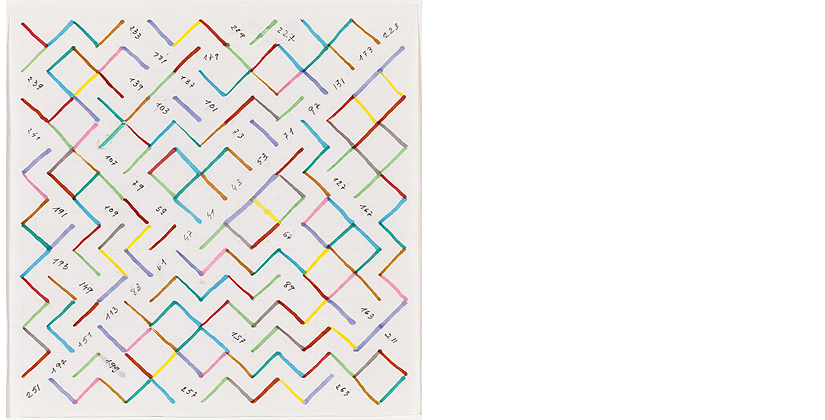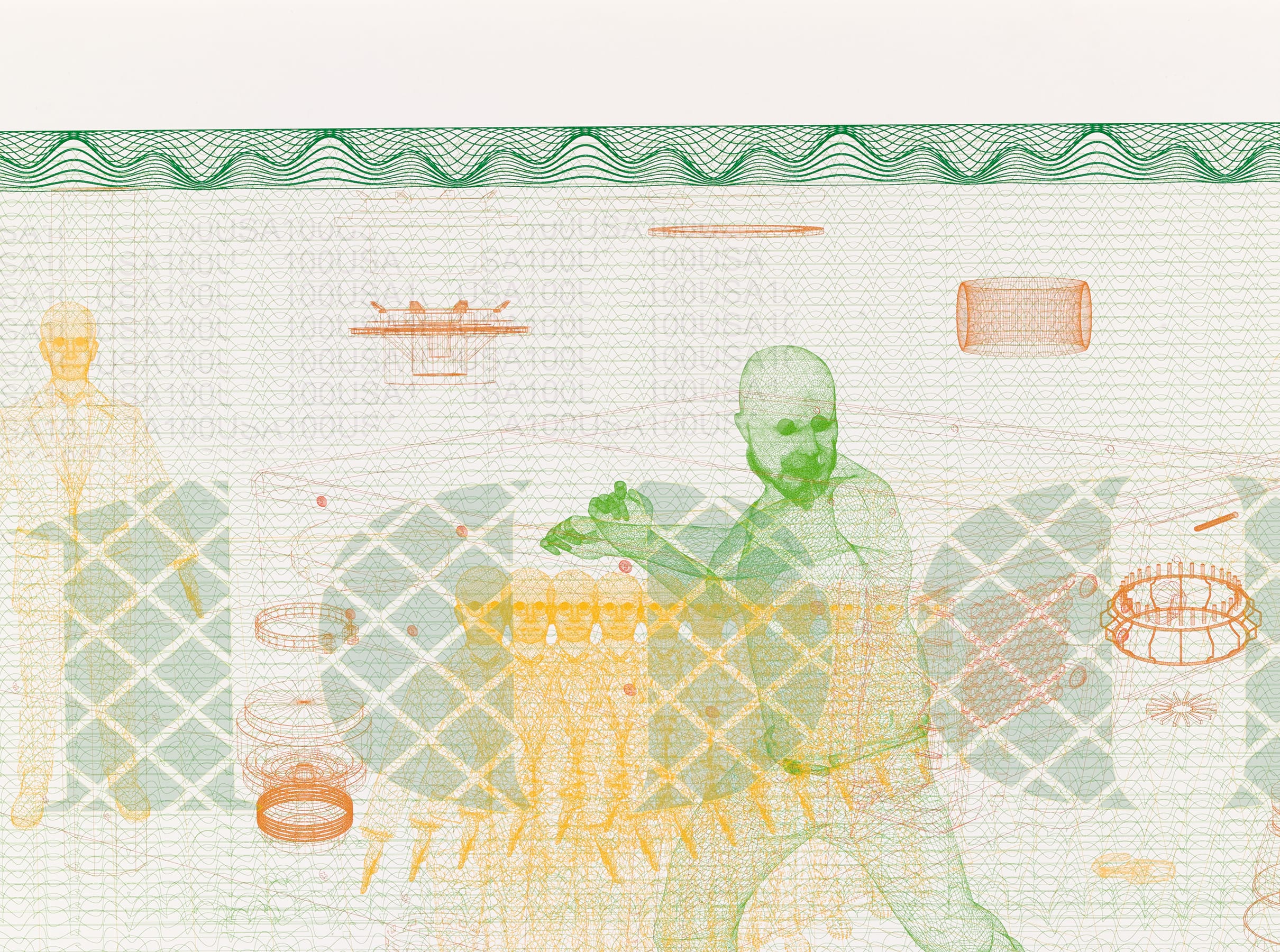
Collection Highlights. Discover some of the most significant works in our collection
The Banco de España Collection has been built up over a period of more than two centuries and is remarkable for its diversity, combining work from very different periods, styles and formats. To highlight this diversity and showcase some of our most iconic works, we regularly feature some of the more outstanding works in a specific section of the Collection area of the website.
For our latest update, we have picked works by three artists spanning over a century: One-Hundred Peseta Note (c. 1898), attributed to Mariano Fortuny y Madrazo, Poem of Prime Numbers (1983) by Esther Ferrer and Washing Away Time (2001), by Mireya Masó.
![[Atribuida a] Mariano Fortuny y Madrazo: 'Billete de cien pesetas' (c.1898)](/f/webca/ADS/Noticias/NotDestColMay2021txt01D.jpg) [Attributed to] Mariano Fortuny y Madrazo: One-Hundred Peseta Note (c. 1898)
[Attributed to] Mariano Fortuny y Madrazo: One-Hundred Peseta Note (c. 1898)
The oldest, One-Hundred Peseta Note, is a small canvas traditionally attributed to Mariano Fortuny y Madrazo, a multitalented artist from Granada, whose mother came from one of the most influential families in nineteenth-century Spanish painting. All the indications are this this was a late work by the artist who, although best known as a fashion designer and lighting engineer, never gave up painting. The approximate date of the picture can be identified by the fact that the banknote shown was only in circulation between June 1898 and May 1900.
In the painting, Fortuny omits many of the graphic features of the note, leaving only the denomination legible. The figure of Gaspar Melchor de Jovellanos, one of the most brilliant intellectuals of the Spanish Enlightenment, is also indistinct and partly hidden behind a red ribbon, nailed to a wall. Precariously hanging from the ribbon, the banknote takes on the appearance of a votive offering. This, argues Carlos Martín, "gives the work an air of vanitas in which the traditional exhortation to the fleeting nature of life and wealth is condensed into a symbol of commercial exchange: money".
 Esther Ferrer: Poem of Prime Numbers (1983)
Esther Ferrer: Poem of Prime Numbers (1983)
Another of the pieces selected for our latest Collection Highlights section is a drawing by Esther Ferrer from the mid-1980s, which explores the poetic and enigmatic beauty of prime numbers. The artist has calculated the numbers without using any form of technology. They are arranged on the paper in a spiral, opening outwards from a vortex-like centre towards the infinity epitomised (like pi) by prime numbers.
Isabel Tejeda explains how the San Sebastian artist went about making this and her other poem-drawings on prime numbers in the collection: she began by writing down the numbers and then she built links between them, generating "sets of coloured lines that fill in the gaps where the composite numbers should be". In addition to these drawings, the collection also has two of Ferrer's sketches from the mid-1970s, in which she uses threads to show how two of the "hypothetical installations" that make up her Spatial Projects series would be structured.
 Mireya Masó: Washing Away Time (2001)
Mireya Masó: Washing Away Time (2001)
The most recent of our three selections is Washing Away Time, one of the photographs in Mireya Masó's project It's not just a Question of Artificial Light or Daylight (2000-2001). As in other works by the Catalan artist, who mainly uses video and photography, in this project Masó takes as her starting point the representation of a space or object that is either associated with or references nature, in which humans —albeit never directly shown— are always very present. Isabel Tejeda says that Masó's "landscapes", charged with a great metaphorical density, can be seen as "portraits of the human being, of its changing sensations and emotions". In addition to Washing Away Time, the Banco de España Collection also has three other photographs from the artist's project It's not just a Question of Artificial Light or Daylight which she made during a residency at the Delfina Studio Trust in London.
